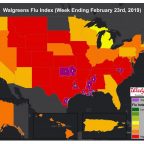Tips on how to properly nourish your lawn
As spring hits full bloom across the country, now is a great time to feed your lawn the nutrients it needs to remain healthy and beautiful this summer.
According to landscape designer, Doug Scott, of Redeem Your Ground in Atlanta, Georgia, many homeowners don’t fully understand the role and importance of regular fertilization for the health of their lawn.
Scott has partnered with Exmark on a new ‘Done in a Weekend’ video designed to give homeowners better insight on fertilizer science and benefits.
In the Fertilizing 101 video, Scott explains the importance of each nutrient to plant health, and what nutrient combinations to look for based on your goals, as well as pitfalls to avoid.
“Just as multi-vitamins supplement the food we eat, fertilizer provides grasses and plants with a vital nutritional boost. Even plants residing in great soil will eventually absorb and deplete essential nutrients from the soil, so they need to be fertilized periodically.”
“All plants require six essential nutrients. Oxygen, carbon and hydrogen, which are received above the ground, through air and water, and nitrogen, phosphorus and potassium, which must be provided by the soil the plants are planted in.”
Scott said those essential nutrients are the source of the often vexing numbers and letters on fertilizer bags.
“Every bag of plant food will contain three numbers, separated by dashes. These represent the three nutrients your plants rely on the soil to provide – nitrogen (N), phosphorus (P) and potassium (K), in that specific order.
“A bag of fertilizer labeled ’11-7-7′ is made up of 11-percent nitrogen, seven-percent phosphorus and seven-percent potassium. The remaining 75-percent consists of inert fillers designed to help properly distribute the active ingredients without burning the lawn.”






